# Case: Fist guessing skill
This case explains the configuration of common skills
# Effect display
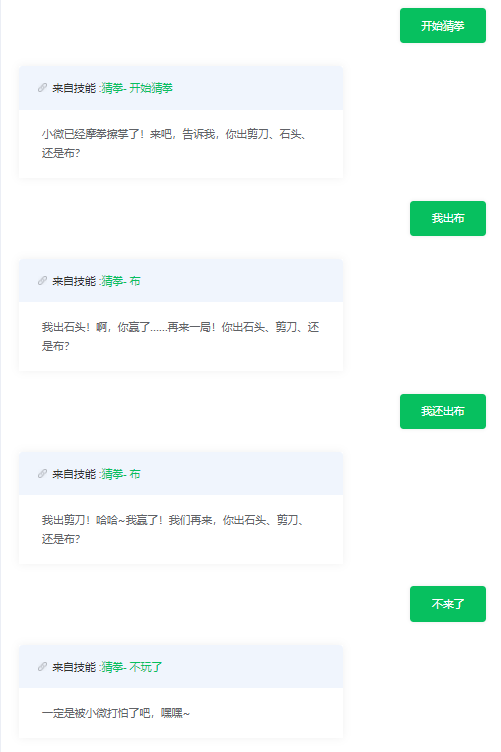
# Step 1: Create skills
Click on Conversation Configuration>>Custom Conversation Skills>>Ordinary skills>>To create a skill, go to the Create a Skill page and fill in the name of the skill "Guessing Game."
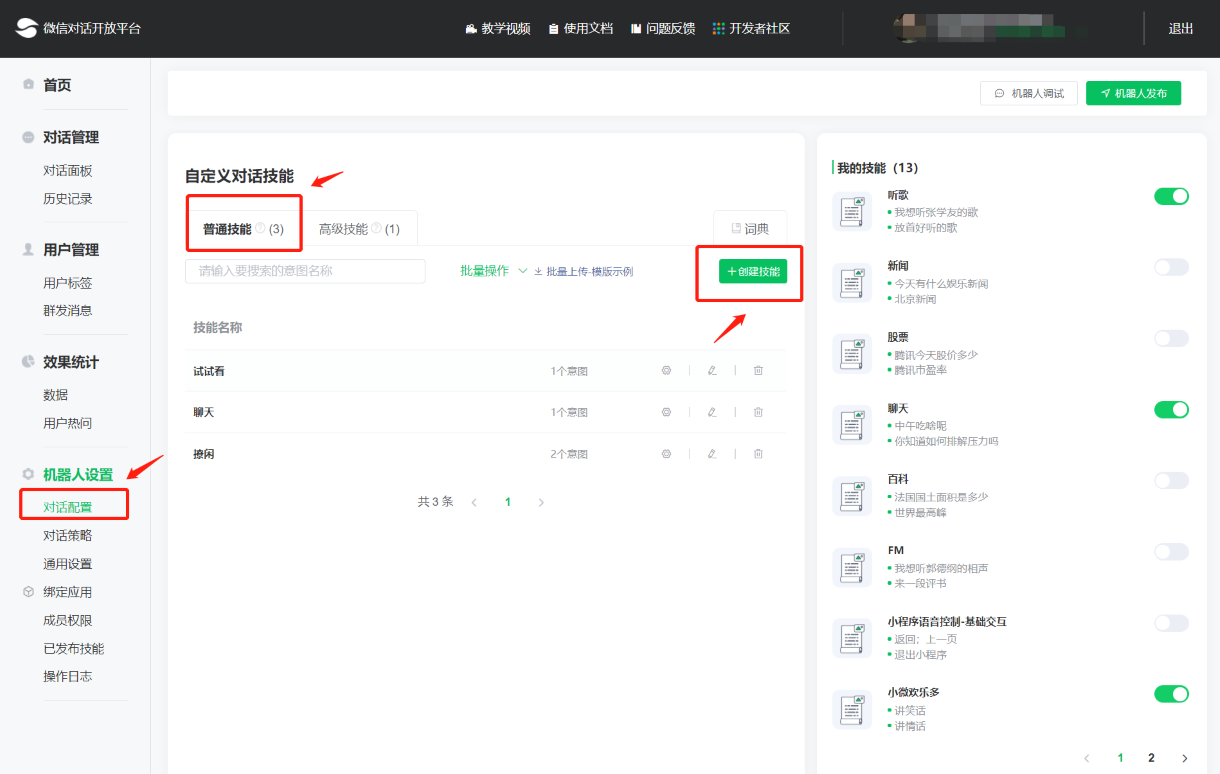
# Step 2: Add Questions
Once the skill is created, we need to create the intention under the skill page, click [New Q & A], and fill in the name of the standard question.
According to the rules of the guessing boxing game, we consider that the user will probably have five kinds of questions and answers: start the game, stone out, out of scissors, cloth, exit the game, so we need to create five kinds of questions and answers (intention) for these five situations.

After creating the Q & A and clicking OK, we will enter the edit page, where we need to configure "supplementary user questions" and corresponding robot answers.
# Step 3: Additional User Questions
According to the game rules of the game, we add common expressions used by users when playing the game, such as: I am out of clothI'll wait for the scissors. Because taking into account the different expression habits of different users and regional expression differences, we need to configure different expression methods as comprehensively as possible to improve the hit rate.
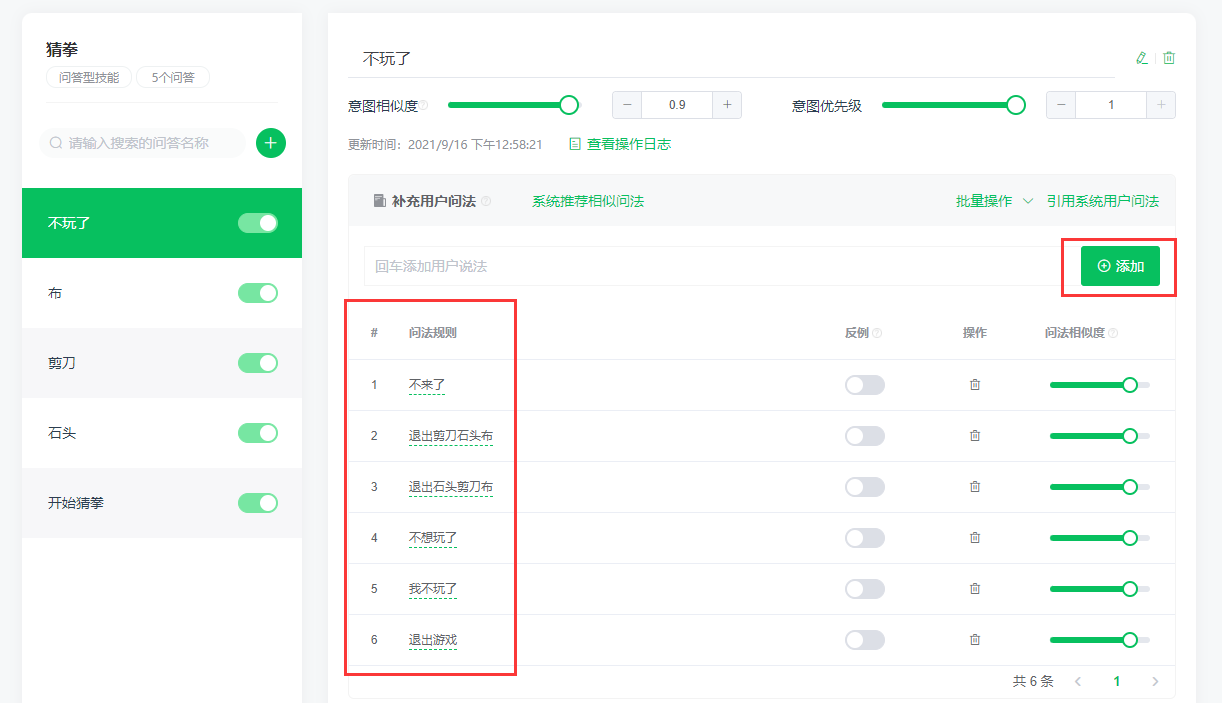
# Step 4: Configure the robot to answer
The robot answer refers to the response that the developer wants the robot to give after the user asks the user to hit the intention.
Since the answer to the user's question in the game is usually fixed with only three results: win, lose, and draw, we only need to edit the corresponding reply text below, configure such “I'm out of the stone! You won! Go for it! Let's try again. Will you buy scissors, rock or paper?” That kind of answer.
At the same time, the robot answers here support adding multiple answers, and the system will randomly select one to reply.
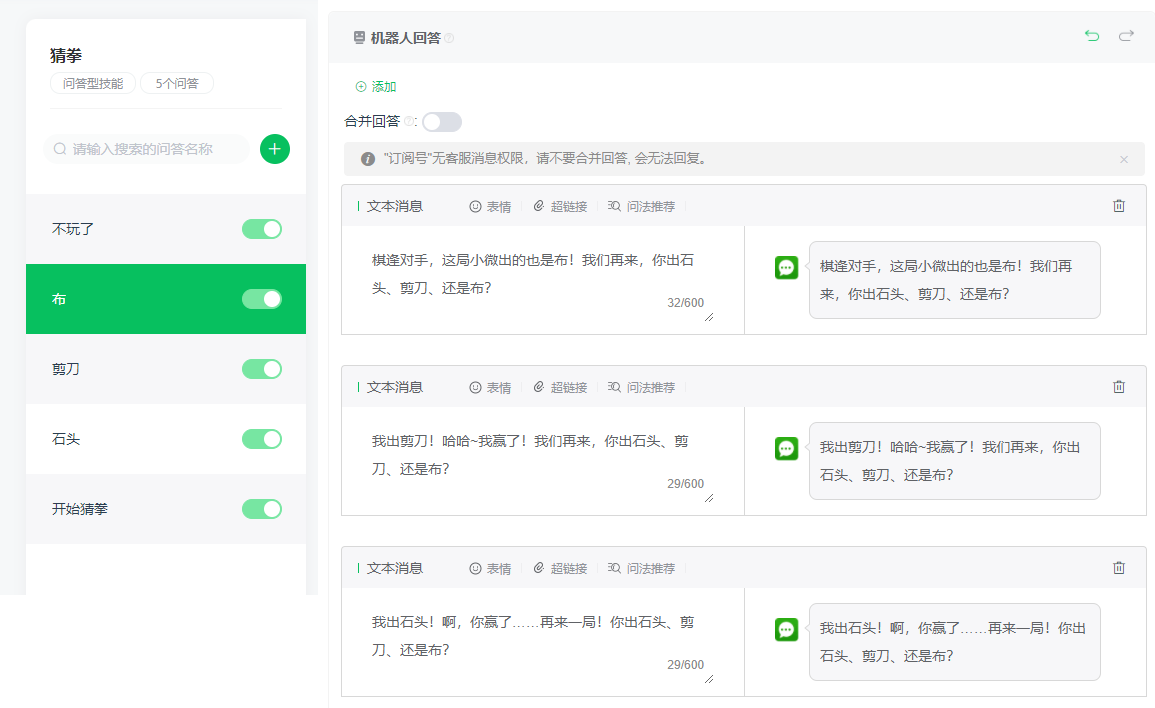
# Step 5: Debugging
After completing the skill configuration, in order to check the skills of the development configuration and ensure that the skills are running smoothly online, we also need to use [Robot Debugging]. In robot debugging, we can test the skill configuration and experience the real dialogue effect after the skill release.
To use the robot debugging function, we need to first click the [robot debugging] button in the upper right corner of the skills page, open the test dialog box, enter the user's question, and test the skill configuration. We can also go to the Robot debugging page and click on JSON to see the ability and intent hits. If the skill match fails or is wrong, you can locate the problem according to the JSON data, and redo the skill modification and debugging.
In the machine debugging of the picture-guessing game, we chose the method of asking: "I give cloth," "I still give cloth," and the robot also randomly gave one of the corresponding answers to ensure the normal progress of the game.
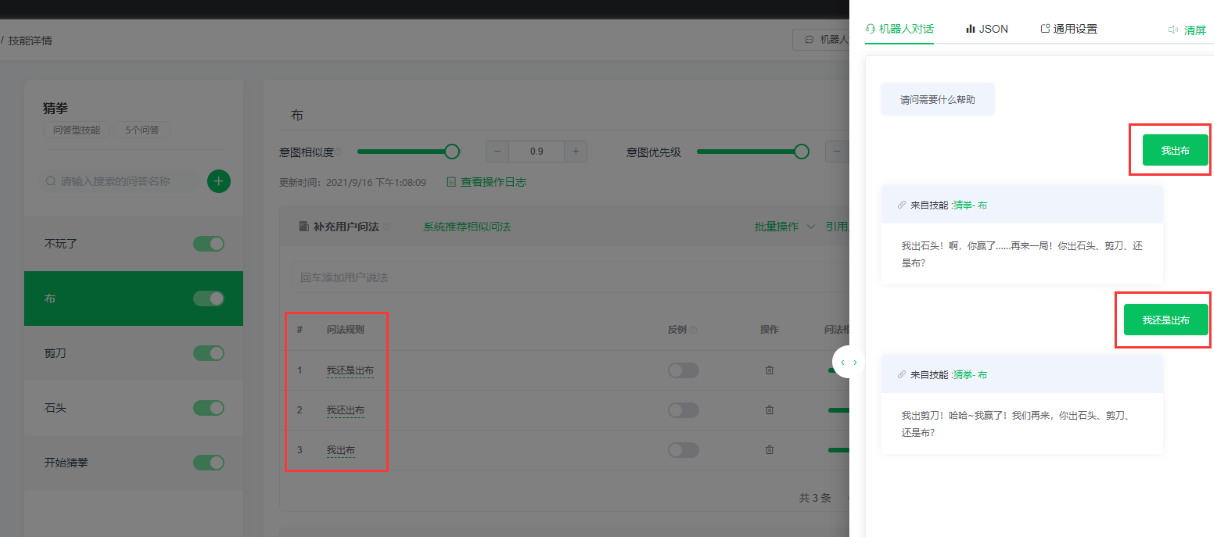
# Step 6: Release and Access
When we finish the skill configuration of the game, the next thing we need to do is to release and launch the skills.
Click the [Robot Publish] button in the upper right corner of the page, you can perform the publishing operation, and the skills will start to apply to the scene you are bound to.